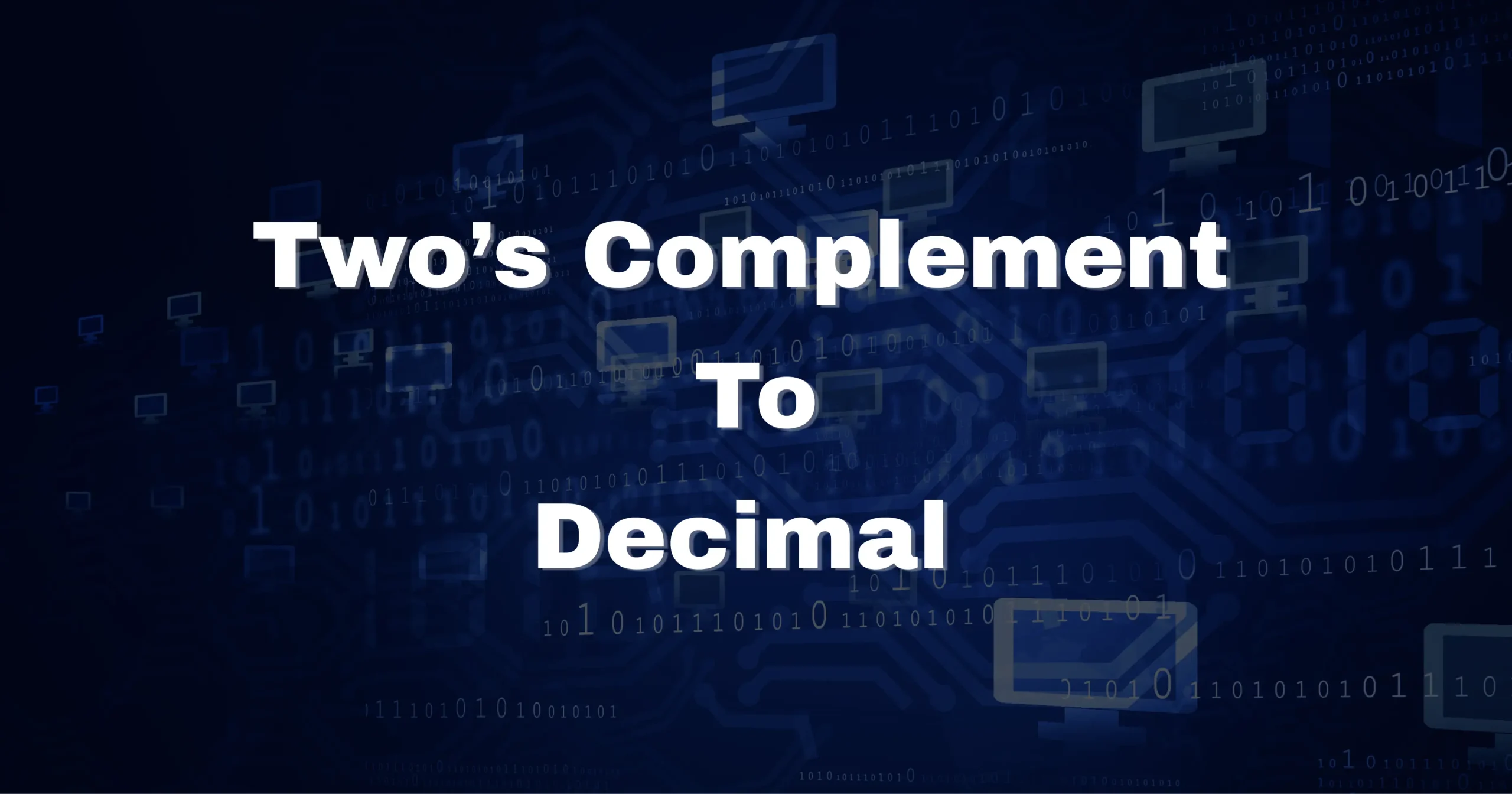Two’s complement is one of the most widely used methods to represent signed integers in binary. It solves the limitations of older systems like signed bit and one’s complement, and most importantly, makes it easy to convert binary numbers to decimal.
If you’re working with computer architecture, programming, or digital electronics, knowing how to convert two’s complement to decimal is a must.
You can also use our free Two’s Complement Calculator to convert it into a decimal.
a) Signed Bit
Signed-bit was the earliest method of representing negative numbers, but it created problems when converting to decimal.
1) Two representations of zero:
- 0000 = +0
- 1000 = -0
This redundancy makes decimal interpretation unreliable.
2) Signed extension doesn’t work for negative numbers:
Example: 1011 (−5 in 4-bit) → extended to 8-bit → 00001011 = +11 in decimal, not -5.
3) Binary addition doesn’t work:
Example: 0101 (+5) + 1001 (−7) = 1110, which doesn’t convert correctly to decimal.
b) 1’s Complement
This system represents negatives by inverting bits. Still, decimal conversion faced issues.
1) Two representations of zero:
Both 0000 and 1111 represent 0, which confuses decimal conversion.
2) Signed extension doesn’t work for negative numbers:
1100 (−3 in 4-bit) extended incorrectly converts to a positive number.
3) Binary addition works with modified rules:
An end-around carry must be applied to get the right decimal result, making it complicated.
c) 2’s Complement
Two’s complement solves these problems and ensures smooth binary-to-decimal conversion.
1) One representation of zero:
0000 always equals decimal 0.
2) Signed extension works for negative numbers:
Example: 1011 (−5 in 4-bit) → extended to 8-bit → 11111011 = -5 in decimal.
3) Binary addition:
Example: 0111 (+7) + 1101 (−3) = 0100 → converts to +4 in decimal.
4) First bit is a signed bit:
- 0 → positive number → convert directly to decimal.
- 1 → negative number → invert + add 1 → then apply minus sign.
5) Memory overflow check:
Example: 0111 (+7) + 0100 (+4) = 1011 → converts incorrectly to -5 because of overflow.
6) Explore Examples
Example 1: Convert 8-bit 11111010 to decimal
- Sign bit = 1 → negative.
- Invert: 00000101
- Add 1: 00000110 = 6
- Decimal = −6
Example 2: Convert 8-bit 00001101 to decimal
Sign bit = 0 → positive. Decimal = 13
Example 3: Convert 4-bit 1111 to decimal
- Sign bit = 1 → negative.
- Invert: 0000
- Add 1: 0001 = 1
- Decimal = −1
Number Systems
Understanding decimal conversion from two’s complement requires knowledge of base systems:
- Binary (base 2): stored format.
- Decimal (base 10): what we want to convert to.
The process bridges these two.
Boolean Algebra and Logic Gates
Two’s complement conversion relies on hardware operations:
- NOT gates for inversion.
- Adders for the “+1” step.
This ensures correct decimal output.
Minimization Techniques
K-map simplification reduces the logic needed for conversion circuits, speeding up binary to decimal interpretation.
Combinational Circuits
These circuits handle conversions automatically using adders and decoders, turning two’s complement binary into decimal values.
Sequential Circuits
Sequential circuits store two’s complement numbers and later convert them into decimal during operations.
Conversion of Flip-Flop
Registers made from flip-flops store two’s complement numbers. When accessed, they are read as correct decimal values.
Register, Counter, and Memory Unit
Registers and counters store signed values, and memory units fetch them. Processors then convert them back into decimal for humans to read.
LMNs and GATE PYQs
Sample GATE exam problems:
- Convert 8-bit 11110101 to decimal.
- Convert decimal −25 to 2’s complement binary.
Thank You!
Converting two’s complement to decimal becomes easy with practice:
- Check the sign bit.
- If positive → direct binary to decimal.
- If negative → invert + add 1 → apply minus sign.

Leave a Reply